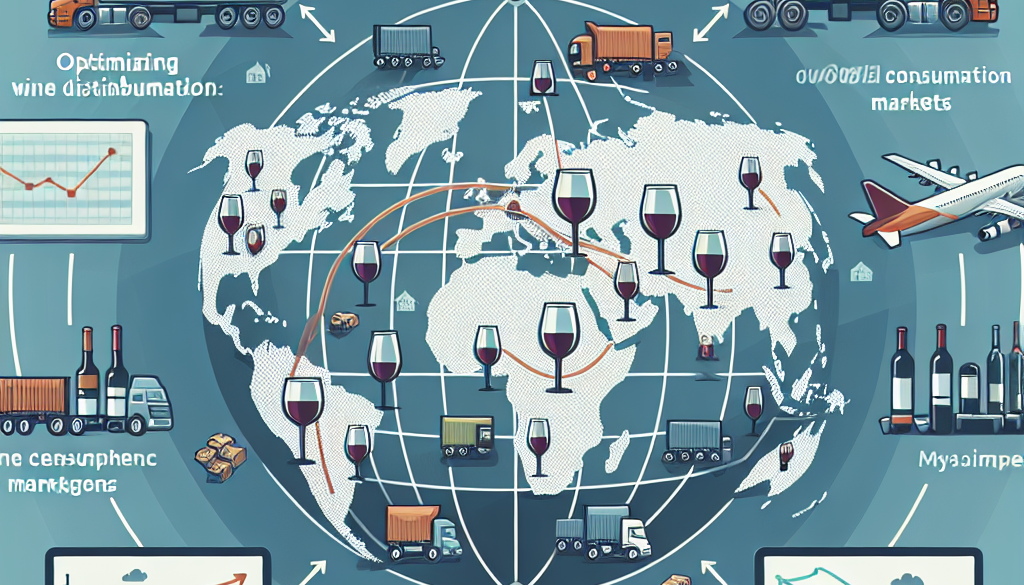How can Wineries Optimize their Wine Distribution Strategies?
-
Table of Contents
- Optimizing Wine Distribution Strategies for Wineries
- Understanding the Distribution Landscape
- Developing a Multi-Channel Distribution Approach
- Leveraging Data and Analytics
- Building Strong Relationships with Distributors and Retailers
- Embracing Technology and Innovation
- Adapting to Regulatory Changes
- Conclusion
- Enhance Your Winery’s Offerings with ETprotein’s High-Quality Protein Products
Optimizing Wine Distribution Strategies for Wineries

The wine industry is a complex and competitive market where wineries must navigate through various distribution channels to reach their consumers effectively. With the right strategies, wineries can enhance their market presence, increase sales, and build brand loyalty. This article explores how wineries can optimize their wine distribution strategies to achieve these goals.
Understanding the Distribution Landscape
Before delving into optimization strategies, it’s crucial for wineries to understand the distribution landscape. The wine distribution system typically involves three tiers: the producer, the distributor, and the retailer. However, with the advent of direct-to-consumer (DTC) sales and e-commerce, wineries now have more avenues to reach their audience.
Developing a Multi-Channel Distribution Approach
To optimize distribution, wineries should consider a multi-channel approach that includes traditional three-tier distribution, DTC sales, and e-commerce platforms. This strategy allows wineries to maximize their reach and cater to different consumer preferences.
- Three-Tier Distribution: While challenging due to competition for shelf space and distributor attention, this channel is essential for reaching a broad audience, especially in markets with strict alcohol regulations.
- Direct-to-Consumer Sales: DTC sales offer higher profit margins and a personal connection with consumers. Wineries can leverage wine clubs, tasting rooms, and online sales to enhance this channel.
- E-Commerce: Online marketplaces and wine-specific platforms can help wineries reach tech-savvy consumers and expand their geographic footprint.
Leveraging Data and Analytics
Wineries can use data and analytics to understand market trends, consumer preferences, and sales performance. By analyzing this information, wineries can make informed decisions about production, marketing, and distribution efforts.
- Market Research: Stay updated on industry trends and consumer behavior to anticipate market shifts.
- Sales Data: Track sales by channel and region to identify high-performing areas and adjust strategies accordingly.
- Consumer Insights: Gather feedback from customers to refine product offerings and marketing messages.
Building Strong Relationships with Distributors and Retailers
Strong partnerships with distributors and retailers are vital for successful distribution. Wineries should focus on building these relationships through regular communication, collaborative marketing efforts, and reliable service.
- Communication: Maintain open lines of communication to ensure partners are informed about product launches and promotions.
- Marketing Support: Provide marketing materials and support to help partners sell your wine effectively.
- Reliability: Ensure consistent product quality and timely deliveries to build trust with partners.
Embracing Technology and Innovation
Technology can streamline distribution processes and enhance customer experiences. Wineries should invest in inventory management systems, CRM software, and e-commerce platforms to stay competitive.
- Inventory Management: Use technology to track inventory levels and manage orders efficiently.
- Customer Relationship Management (CRM): Implement CRM systems to manage customer data and personalize marketing efforts.
- E-Commerce Platforms: Utilize online platforms to reach consumers directly and offer a convenient shopping experience.
Adapting to Regulatory Changes
Regulatory environments can vary significantly by region and are subject to change. Wineries must stay informed about these changes and adapt their distribution strategies accordingly to remain compliant and competitive.
Conclusion
Optimizing wine distribution strategies requires a comprehensive approach that includes understanding the distribution landscape, developing a multi-channel approach, leveraging data and analytics, building strong relationships with distributors and retailers, embracing technology, and adapting to regulatory changes. By focusing on these areas, wineries can enhance their market presence, increase sales, and build brand loyalty.
Enhance Your Winery’s Offerings with ETprotein’s High-Quality Protein Products
While optimizing distribution strategies, wineries can also consider diversifying their product offerings. ETprotein’s range of high-quality protein products can complement a winery’s selection, especially for consumers interested in health and wellness. With organic, non-GMO, and allergen-free options, ETprotein’s proteins can be an excellent addition to a winery’s portfolio, appealing to a broader audience and potentially increasing sales.
About ETprotein:
ETprotein, a reputable protein and L-(+)-Ergothioneine (EGT) Chinese factory manufacturer and supplier, is renowned for producing, stocking, exporting, and delivering the highest quality organic bulk vegan proteins and L-(+)-Ergothioneine. They include Organic rice protein, clear rice protein, pea protein, clear pea protein, watermelon seed protein, pumpkin seed protein, sunflower seed protein, mung bean protein, peanut protein, and L-(+)-Ergothioneine EGT Pharmaceutical grade, L-(+)-Ergothioneine EGT food grade, L-(+)-Ergothioneine EGT cosmetic grade, L-(+)-Ergothioneine EGT reference grade and L-(+)-Ergothioneine EGT standard. Their offerings, characterized by a neutral taste, non-GMO, allergen-free attributes, with L-(+)-Ergothioneine purity over 98%, 99%, cater to a diverse range of industries. They serve nutraceutical, pharmaceutical, cosmeceutical, veterinary, as well as food and beverage finished product distributors, traders, and manufacturers across Europe, USA, Canada, Australia, Thailand, Japan, Korea, Brazil, and Chile, among others.
ETprotein specialization includes exporting and delivering tailor-made protein powder and finished nutritional supplements. Their extensive product range covers sectors like Food and Beverage, Sports Nutrition, Weight Management, Dietary Supplements, Health and Wellness Products, and Infant Formula, ensuring comprehensive solutions to meet all your protein needs.
As a trusted company by leading global food and beverage brands and Fortune 500 companies, ETprotein reinforces China’s reputation in the global arena. For more information or to sample their products, please contact them and email sales(at)ETprotein.com today.












